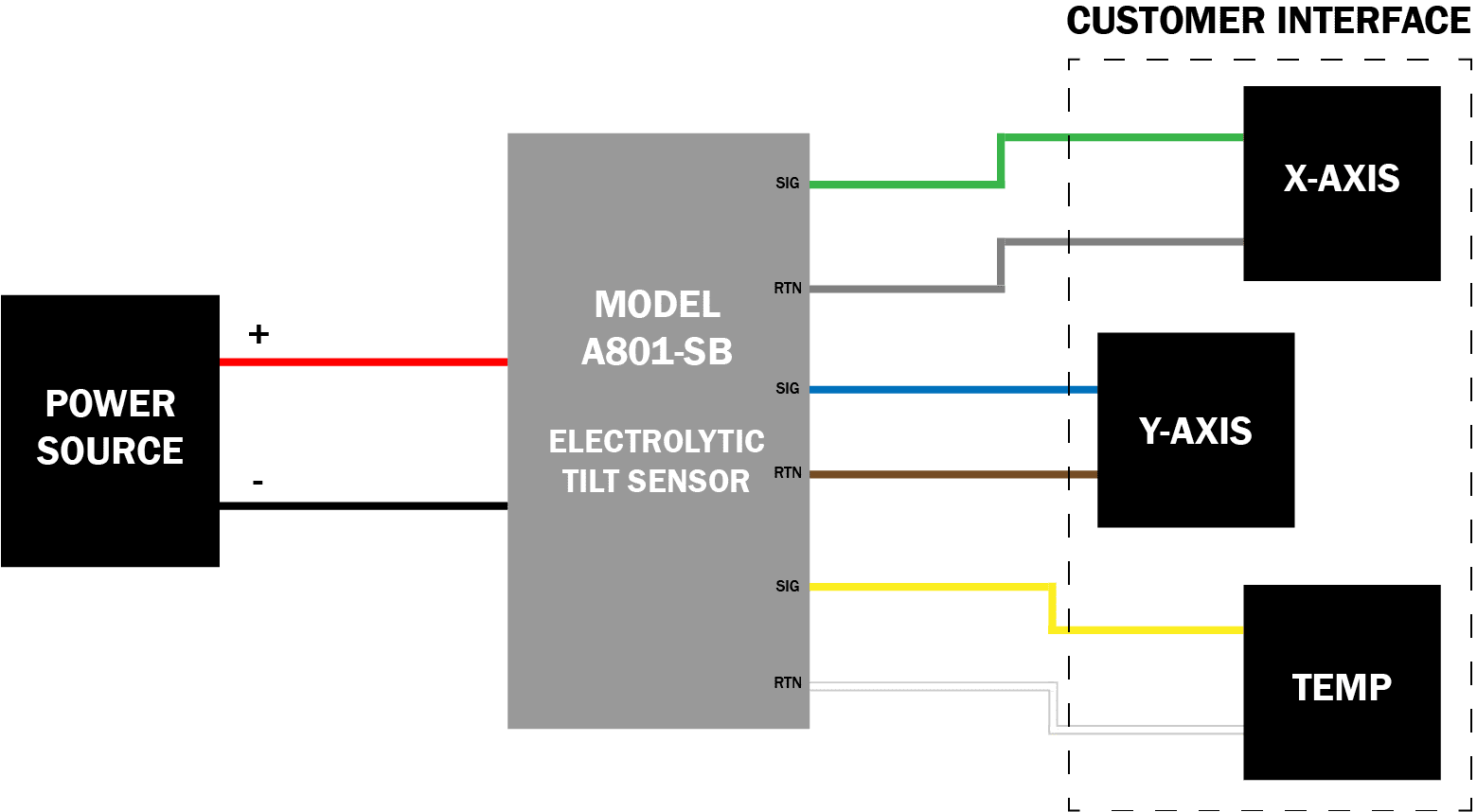Many problems encountered when using sensors such as Jewell’s products are often a result of the way the sensors are connected. The wiring and connections of each product and model will vary, so it is very important to review the documentation for the specific model being used. It’s also important to make the distinction between electrical common and Earth or chassis ground when reviewing the documentation. Note that some sensor products require a dual power source and in those cases, the power and signal common are made between the two power sources. To reduce the possibility of problems like ground loops, we recommend employing the following standard good engineering practices:
- Using shielded twisted pair cabling
- Grounding cable shield only at one side
- Using the shortest amount of cable possible
- Not sharing grounds
Some sensor models have transient protection. These sensors include circuity that employs surge protection components on all external lines (input and output) that typically connect to the case to shunt high-Voltage transients in order to protect the internal components. Often, transient protection as well noise reduction can be enhanced by Earth grounding the shield of the cable at one end only. For the models that don’t include transient suppression, utilizing clean and regulated power sources in addition to proper connection is critical to avoiding damage to the sensor. High-Voltage transients on either the input or outputs are a leading cause of damage seen with sensors.
Below is an example of the proper connection of the Model A801-SB electrolytic tilt sensor. When connecting the sensor, we want to prevent mistakes like ground loops, Electromagnetic Interference (EMI), and transient problems that can cause high noise on the output, biased readings, and damage to the sensor. Make sure the inputs are as clean as possible because noise on the input will result in noise on the output. It is important to note that twisted pair, shielded cabling should only be grounded on one side as shown below.
After proper connections, other factors to consider are undesirable environmental inputs, such as seismic noise and vibration caused by walking or talking. These can result in variations in the output that resemble electrical noise. You can resolve the response to vibration in the environment by adding low-pass filtering to your sensor. Note that the higher the bandwidth of the sensor, the more environmental noise there will be in the output signal. Remember that Jewell sensors are customizable! We can supply filtering or custom bandwidths to meet your specific requirements.
Of course, reviewing the documentation for the specific model you are using is the best way to ensure that it is being connected correctly to achieve the best performance and avoid common problems. And if you still have questions, our staff is always standing by to help you find the solutions you need!

